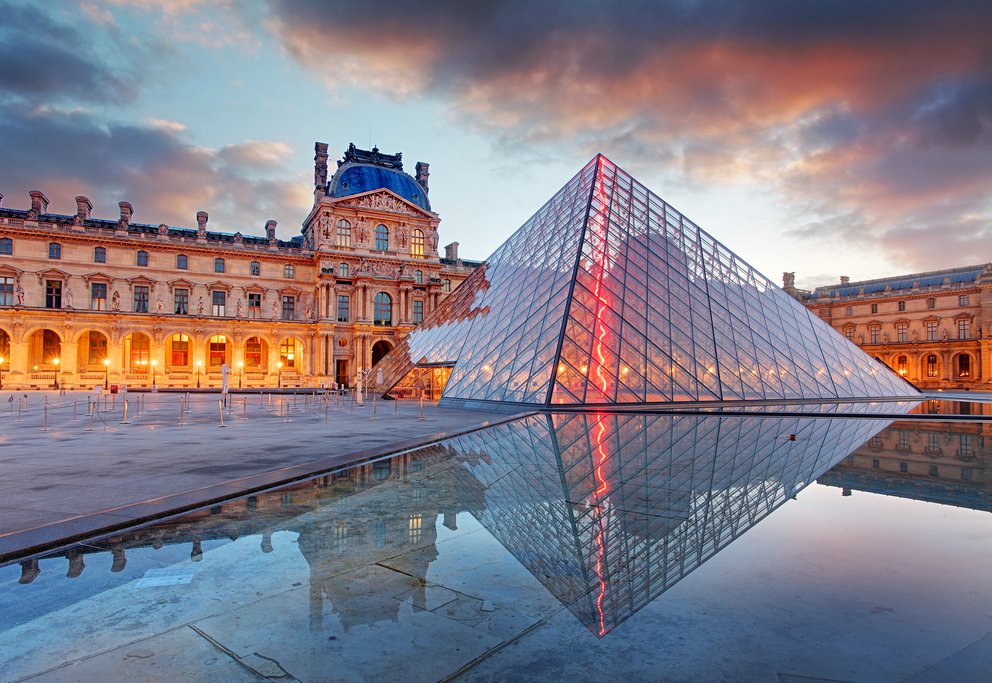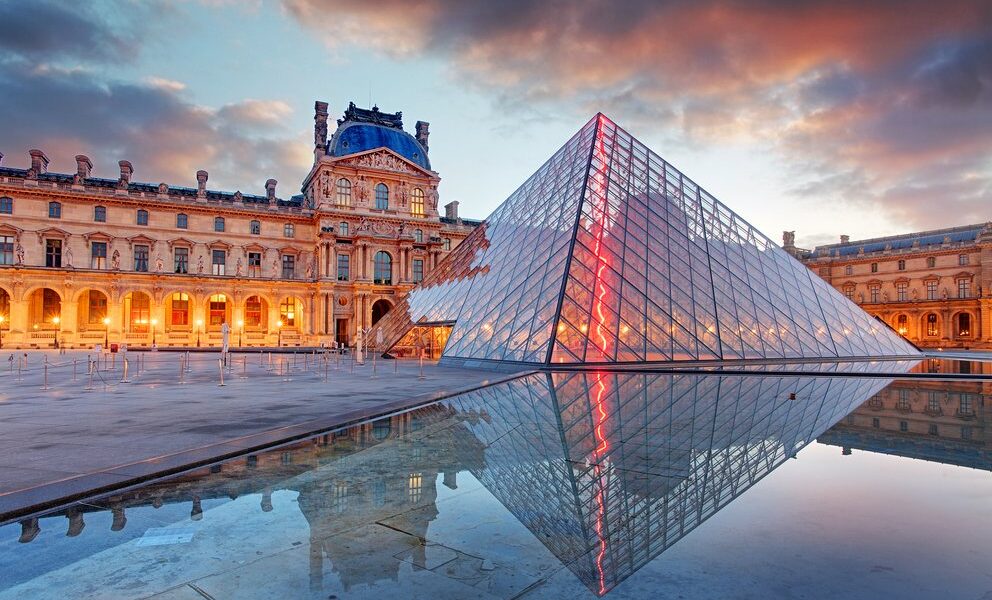
Cold, grey, and rainy, November is best suited for urban and cultural exploration: museums and galleries, food and wine. While this may seem like a less than ideal time to visit weather-wise, there are fewer crowds, cheaper accommodation, and world-class wines and truffles to be had. There’s even a festival celebrating the release of new wine, mere weeks after the grape harvest. Read on to learn more.
France in November: A Comprehensive Travel Guide
## Weather in France During November
The weather in France during November is known for its variability, and it’s generally characterized as cold, grey, and wet with limited sunshine across the country. While the beauty of France remains undiminished, preparing for the weather is key to a comfortable trip. If you’re arriving in **Paris**, the iconic capital city, you can anticipate an average temperature of around 39°F (4°C). This calls for warm layers and a readiness for potentially chilly days.
Across the different regions of France, temperatures vary. In the northeast, expect temperatures to range between 36-46°F (2-8°C). Heading south, to **South France**, you’ll find a slightly milder climate with temperatures hovering around 48-61°F (9-16°C). In **Central France**, cities such as **Lyon** experience temperatures between 39-50°F (4-10°C). The western part of the country, along the **Atlantic**, sees temperatures of approximately 41-55°F (5-13°C). Therefore, packing appropriately for your specific destination within France is crucial.
Given the likelihood of rain, it’s highly recommended to pack an umbrella, alongside warm and waterproof clothing, particularly if your travels take you to the northern regions or the mountainous areas of France. Layering clothing is also advisable, especially for those cooler evenings along the glamorous **French Riviera**, where the temperature can drop noticeably after sunset.
## Crowds and Costs in France During November
One of the appealing aspects of traveling to France in November is the absence of large crowds. The peak tourist season has concluded, and even the shoulder season travelers have largely departed, leaving the country with a more relaxed atmosphere. As a result, hotel rates tend to be lower than during the busier months. You can often find attractive deals on flights and train tickets, making travel within France more affordable. Additionally, the queues for many famous attractions, museums, and galleries are significantly shorter, allowing you to explore these cultural treasures with greater ease and less congestion.
However, it’s important to remember that popular cities, such as **Paris**, still attract a steady stream of year-round tourists. While the crowds may be smaller compared to the summer months, you should still anticipate encountering other visitors at major landmarks. On the other hand, November marks the official beginning of the ski season in France. Many locals and avid skiers flock to the ski resorts in the Alps, so expect those areas to be more lively.
Keep in mind that if you happen to be in France on November 1st (All Saints’ Day) or November 11th (Armistice Day), you should be aware that these are nationwide public holidays. Many businesses, including restaurants, museums, and galleries, will be closed on these days. Plan accordingly and check the opening hours of any attractions you intend to visit.
## Where to Go in France During November
Given the likelihood of rain during November, it’s an opportune time to explore France’s rich indoor attractions, such as its renowned galleries and museums. Many travelers begin or end their French holiday in **Paris**, where they can delve into the artistic treasures housed in the world-famous **Louvre**, home to Leonardo da Vinci’s iconic Mona Lisa. Other must-see museums in **Paris** include the **Musée d’Orsay**, which showcases Impressionist and Post-Impressionist masterpieces, the **National Museum of Modern Art**, for contemporary art enthusiasts, the **Musée de l’Armée Invalides**, best known for housing Napoleon’s tomb, and the **Panthéon**, a neoclassical monument containing the remains of distinguished French citizens. A short trip outside of the city center leads to the grand **Château de Versailles**, a former royal residence.
With fewer tourists around, November presents an ideal opportunity to visit two of **Paris’** most iconic and frequently photographed landmarks: the **Arc de Triomphe**, located at the top of the **Champs-Élysées**, and the magnificent **Eiffel Tower**. You can enjoy a more leisurely experience without battling through large crowds.
Another classic destination is **Dijon**, the historical capital city of the Burgundy region in eastern France. November is the month when **Dijon** hosts its annual **International and Gastronomic Fair**, a celebration of French food and wine. Plan to spend several hours exploring the fair’s various venues, sampling the delectable products on display. Afterwards, venture out to discover the city’s other attractions, such as the **Musee des Beaux-Arts de Dijon**, one of the oldest museums in France and part of the Palace of the Dukes of Burgundy, the impressive 13th-century gothic **Dijon Cathedral**, and consider joining a tour to visit the **Côtes de Nuit** vineyards, one of the country’s most prominent wine-producing regions.
A trip to France wouldn’t be complete without experiencing the beauty of **Provence** or the serene atmosphere of the now-quiet **Côte D’Azur**, where you can take leisurely strolls along the waterfront. If a sudden storm should arise, you’ll find an abundance of charming cafes and restaurants nearby, offering a cozy haven to warm up with a seasonal drink.
## What to Do in France During November
November is the perfect time to embrace the crisp air and don your walking shoes to experience the country’s stunning fall foliage. Autumn arrives later in the southern half of France, making November an excellent month to venture into the rural regions. One exceptional option is to hike along the historic **Cathar footpath**, which traverses the dramatic mountain landscapes, forests, and gorges of southwestern France. For more extensive coverage of the region and breathtaking views, consider taking a ride on the Little Yellow Train through the **French Pyrenees**, starting in the UNESCO-protected **Villefranche-de-Conflent**.
If the weather is less than ideal, there are still plenty of opportunities to enjoy France’s cultural and culinary offerings indoors. As previously mentioned, museums and galleries are excellent options. However, you can also indulge in France’s delectable cuisine. **Lyon**, for instance, boasts a food scene that rivals that of **Paris**. Pair a glass of wine from the Northern Rhône Valley with a traditional dish of wine-braised chicken, known as *coq au vin*, or the city’s renowned sausage, *rosette de Lyon*. For a seasonally earthy treat, look no further than the black truffle. You can either embark on a truffle hunt yourself or purchase this delicacy from weekly markets, such as the one in **Carpentras** in the **Var** region.
Towards the end of November, Christmas markets begin to emerge, heralding the arrival of the holiday season. Boulevards, streets, and marketplaces in towns and cities across the country transform into festive displays lined with colorful wooden stalls. Take advantage of the opportunity to browse the Christmas markets and find unique gifts and souvenirs for your loved ones back home.
## Events in France During November
**La Toussaint (All Saints Day)**: November 1st is a public holiday in France dedicated to commemorating the dead. Be prepared for some closures of businesses and attractions.
**Armistice de la Première Guerre Mondiale (Armistice Day)**: November 11th is a solemn national holiday that marks the end of World War I. Many schools and businesses will be closed. Families often visit the graves of their departed loved ones, and various rites and rituals are held at significant French battlefields.
**Beaujolais Nouveau (Festival of New Wine)**: This annual nationwide event takes place on the third Thursday of November and celebrates the release of the new Beaujolais wine at 12:01 am, just weeks after the grape harvest. The festivities include music, fireworks, and lively parties.
B-875

